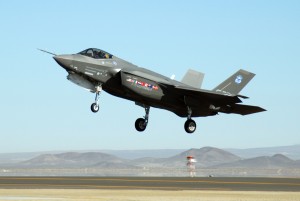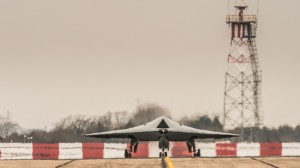Tag Archives: International Acquisitions
Thoughts on International F-35 Buys
This post is part of a group created in partnership with the US Naval Institute covering a Lockheed Martin media event for the F-35 Lightning II. For an analysis of the fighter’s potential as an unmanned aircraft, visit here. For my discussion of other domestic considerations with the program’s development, visit here.
 Though I didn’t get my mandatory crew rest, taking a turn on the stick of the F-35 Lightning II cockpit demonstrator was a great opportunity. Even better, though, were the insights I gained regarding the international aspects of the program. International cooperation defines the F-35 in a way unlike many other acquisitions programs. As I needed to catch up on my facts and figures, I’ll include them for those who need to get up to speed:
Though I didn’t get my mandatory crew rest, taking a turn on the stick of the F-35 Lightning II cockpit demonstrator was a great opportunity. Even better, though, were the insights I gained regarding the international aspects of the program. International cooperation defines the F-35 in a way unlike many other acquisitions programs. As I needed to catch up on my facts and figures, I’ll include them for those who need to get up to speed:
- Foreign sales (both contracts with international partners in the F-35 program and traditional Foreign Military Sales [FMS]) currently account for approximately three out of eight aircraft that will be produced in the program of record. This includes 700 aircraft for international partners in the program and a projected 800 to be sold through FMS. As of now, 61 FMS aircraft are confirmed.
- Though the US remains the largest purchaser of the F-35, international sales will account for the majority of aircraft delivered between 2014 and 2017. This reflects, according to Lockheed Martin, the need of foreign militaries to recapitalize aging aircraft. I think the rapidity with which international military forces will begin fielding the F-35 is an interesting and under-reported aspect of the overall procurement plan.
- International deliveries begin next week. A ceremony in Fort Worth, Texas and a flight to Eglin AFB in Florida will herald the delivery of the first F-35 to the United Kingdom. The next foreign delivery will occur in September to The Netherlands.
- A major section of the fuselage – called the empennage – is produced in the United Kingdom by BAE Systems.
For all of the discussion regarding the F-35 in the US, the public often neglects the effect that changes to the F-35 program will have on other partners in the program. These partners are close allies and we have, by soliciting their funding, obligated ourselves in many ways to go the distance.
Blurring military acquisitions with diplomacy makes the F-35 program a tool of foreign policy in and of itself. Though domestic political concerns have raised valid questions regarding the future of the F-35, Americans need to consider the impact to our foreign policy caused by any changes to the program. Anyone arguing for the truncation or the elimination of the F-35 program must also explain how the United States will mitigate the damage such an act would cause to our international relationships.
As a final note, Scott Cheney-Peters and I had a great discussion – which included international aspects of the F-35 program – at TheRiskyShift.com‘s new “Debrief” podcast. Grab some coffee (or tea, for those across the pond) and take a listen!
LT Kurt Albaugh, USN is President of the Center for International Maritime Security, a Surface Warfare Officer and Instructor in the U.S. Naval Academy’s English Department. The opinions and views expressed in this post are his alone and are presented in his personal capacity. They do not necessarily represent the views of U.S. Department of Defense or the U.S. Navy.


